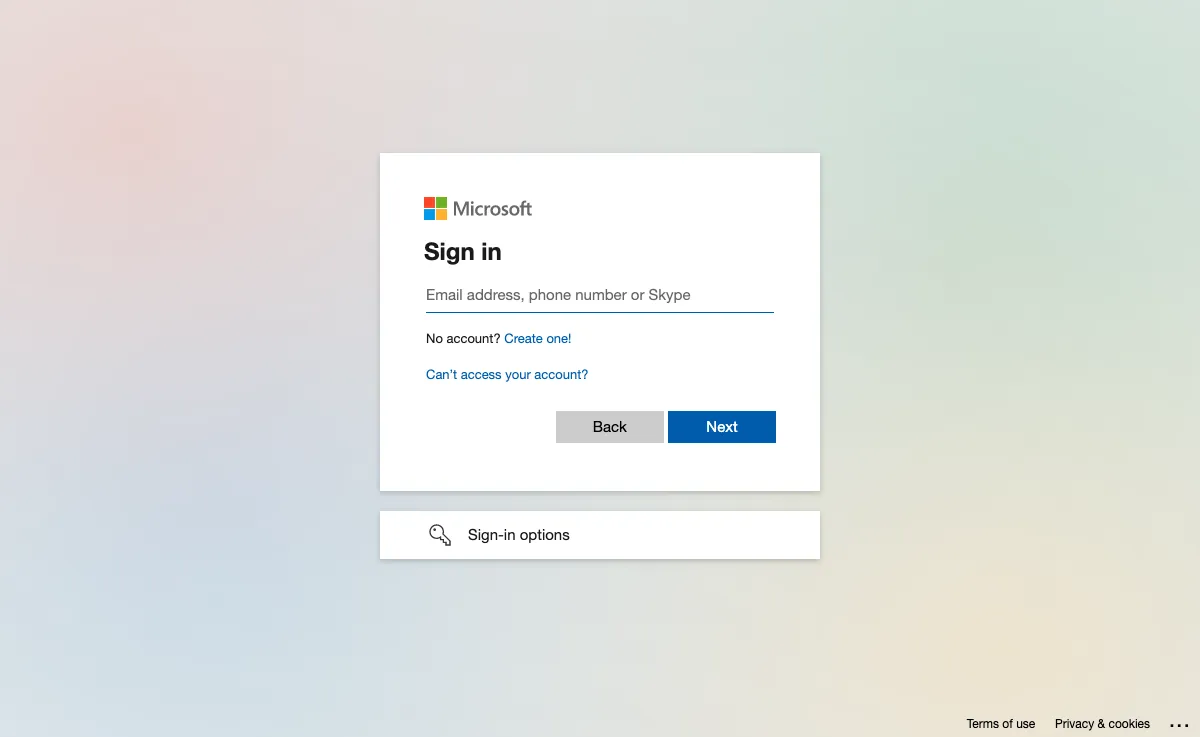Federal Investigation: Millions Stolen Via Office365 Executive Account Hacks

Table of Contents
The Modus Operandi of Office365 Executive Account Hacks
Executive-level accounts are particularly valuable to attackers because they often hold significant financial control and access to sensitive company data. The methods used are increasingly sophisticated and exploit human vulnerabilities as well as technical weaknesses.
Phishing and Spear Phishing Attacks
Phishing attacks leverage deceptive emails or messages designed to trick users into revealing sensitive information, such as usernames, passwords, or financial details. Spear phishing is a more targeted approach, customizing the attack to the specific individual and their organization.
- Email Spoofing: Attackers mimic legitimate email addresses to appear trustworthy.
- Malicious Links: Emails contain links that redirect users to fake login pages or download malware.
- Example: A CEO receives an email seemingly from their CFO, requesting an urgent wire transfer.
- Effectiveness: These attacks are highly effective because they exploit trust and urgency. Executives are often busy and may not scrutinize emails as carefully as other employees.
Credential Stuffing and Brute-Force Attacks
These attacks leverage stolen credentials from other breaches or use automated tools to guess passwords.
- Credential Stuffing: Attackers use lists of stolen usernames and passwords obtained from previous data breaches to attempt logins on various platforms.
- Brute-Force Attacks: Attackers systematically try different password combinations until they find the correct one. Weak passwords are easily cracked.
- Vulnerabilities: Reusing passwords across multiple accounts significantly increases the risk of successful attacks.
- Stolen Credential Databases: The dark web contains vast databases of stolen credentials readily available to attackers.
Exploiting Third-Party Apps and Integrations
Many organizations use third-party apps and integrations with Office365, which can introduce security vulnerabilities if not properly managed.
- Vulnerable Apps: Poorly secured or outdated apps can provide entry points for attackers.
- Risky Permissions: Overly permissive app permissions can grant attackers unwanted access to data.
- Importance of Review: Regularly reviewing and updating app permissions is crucial to minimize risk.
The Devastating Financial and Reputational Consequences
The impact of successful Office365 executive account hacks extends far beyond the immediate financial loss.
Direct Financial Losses
Millions of dollars can be lost through fraudulent wire transfers, unauthorized payments, and data breaches leading to financial fraud.
- Fraudulent Transactions: Attackers can initiate unauthorized transactions, draining company accounts.
- Wire Transfers: Large sums of money can be quickly transferred to offshore accounts.
- Data Breaches: Stolen data can lead to identity theft, financial losses, and legal action.
- Long-Term Instability: Significant financial losses can threaten the long-term viability of a business.
Reputational Damage and Loss of Customer Trust
Breaches severely damage a company's reputation, eroding customer trust and impacting future business.
- Loss of Trust: Customers may lose confidence in the company’s ability to protect their data.
- Decreased Sales: Negative publicity can lead to a significant drop in sales and revenue.
- Brand Value: The company’s brand value and market standing can suffer long-term damage.
- Investor Confidence: Investors may lose confidence, impacting stock prices and funding opportunities.
Legal and Regulatory Ramifications
Companies face legal action, regulatory fines, and ongoing costs associated with investigations and remediation.
- Legal Action: Lawsuits from affected customers and partners are a likely outcome.
- Regulatory Fines: Non-compliance with data protection regulations can result in significant fines.
- Data Breach Notifications: The cost and complexity of notifying affected individuals can be substantial.
- Investigations: Legal and regulatory investigations can be lengthy and expensive.
Strengthening Your Office365 Security Posture: Preventative Measures
Proactive measures are essential to protect your organization from Office365 executive account hacks.
Multi-Factor Authentication (MFA)
MFA adds an extra layer of security, requiring multiple forms of authentication to verify identity.
- Crucial Role: MFA is a fundamental element of robust security.
- MFA Methods: One-time codes, biometric authentication, and hardware tokens.
- Enforcement: Mandatory MFA for all users, especially executives, is paramount.
Robust Password Policies and Security Awareness Training
Strong, unique passwords and regular security awareness training are vital.
- Strong Passwords: Enforce complex password requirements and encourage the use of password managers.
- Security Awareness: Regular training educates employees about phishing, malware, and social engineering tactics.
- Phishing Simulations: Conduct regular simulated phishing attacks to test employee vigilance.
Monitoring and Alerting Systems
Real-time monitoring and anomaly detection are essential for identifying and responding to threats.
- User Activity Monitoring: Track user logins, access attempts, and data access patterns.
- Anomaly Detection: Identify unusual activities that may indicate malicious behavior.
- Prompt Alerts: Establish a system for promptly alerting security teams to suspicious events.
Regular Security Audits and Penetration Testing
Regular security assessments identify vulnerabilities and weaknesses.
- Security Audits: Regularly assess your Office365 security configuration and identify potential vulnerabilities.
- Penetration Testing: Simulate real-world attacks to expose security weaknesses.
- Vulnerability Remediation: Address identified vulnerabilities promptly and effectively.
Conclusion: Protecting Your Organization from Office365 Executive Account Hacks
The rise of Office365 executive account hacks presents a significant threat to businesses, leading to substantial financial losses and reputational damage. The consequences highlighted – including millions lost, reputational damage, and legal ramifications – underscore the urgent need for proactive security measures. Implementing multi-factor authentication, robust password policies, security awareness training, monitoring systems, and regular security audits is crucial to protect your organization. Protect your business from Office365 executive account hacks today. Strengthen your Office365 security now by enabling MFA, conducting security audits, and investing in robust Office365 security solutions. Don't wait until it's too late.

Featured Posts
-
 Lizzos Transformation Before And After Photos From The Oscars
May 05, 2025
Lizzos Transformation Before And After Photos From The Oscars
May 05, 2025 -
 Subdued Glamour Blake Lively And Anna Kendricks Premiere Competition
May 05, 2025
Subdued Glamour Blake Lively And Anna Kendricks Premiere Competition
May 05, 2025 -
 Stanley Cup Playoffs First Round Predictions And Analysis
May 05, 2025
Stanley Cup Playoffs First Round Predictions And Analysis
May 05, 2025 -
 Bob Bafferts Return To The Kentucky Derby An Identity Crisis In Racing
May 05, 2025
Bob Bafferts Return To The Kentucky Derby An Identity Crisis In Racing
May 05, 2025 -
 Colonial Downs To Host Virginia Derby Stones Official Announcement
May 05, 2025
Colonial Downs To Host Virginia Derby Stones Official Announcement
May 05, 2025
Latest Posts
-
 The Lasting Legacy Of Fleetwood Mac Pioneering The Supergroup Concept
May 05, 2025
The Lasting Legacy Of Fleetwood Mac Pioneering The Supergroup Concept
May 05, 2025 -
 Fleetwood Macs Rumours The Genesis Of The Modern Supergroup
May 05, 2025
Fleetwood Macs Rumours The Genesis Of The Modern Supergroup
May 05, 2025 -
 Rumours 48 Years After Fleetwood Macs Turbulent Creation Of A Timeless Classic
May 05, 2025
Rumours 48 Years After Fleetwood Macs Turbulent Creation Of A Timeless Classic
May 05, 2025 -
 Fleetwood Mac Rumours Of A World First Supergroup
May 05, 2025
Fleetwood Mac Rumours Of A World First Supergroup
May 05, 2025 -
 Novo Izdanje Gibonnija Promocija Na Sarajevo Book Fair U
May 05, 2025
Novo Izdanje Gibonnija Promocija Na Sarajevo Book Fair U
May 05, 2025
